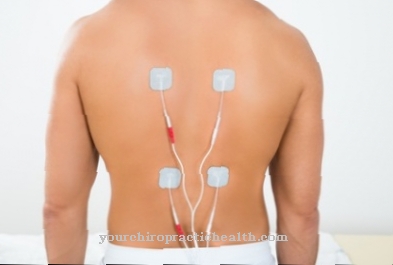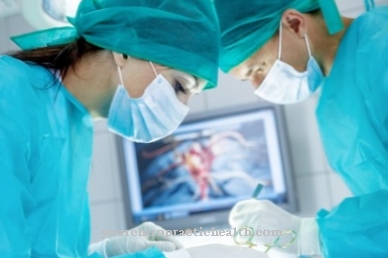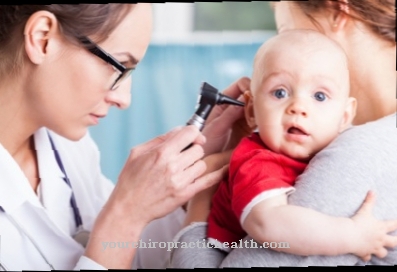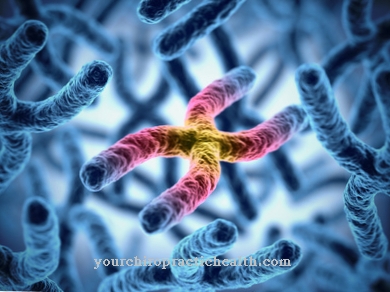Even if the chronic and often complicated course of hemorrhoids affects those affected psychologically and physically, we often experience that many people who suffer from this disease are hesitant to consult a doctor. The reason for this lies in the completely unfounded prejudice that this suffering is offensive. For this reason, in the Middle Ages, the term hemorrhoids disappeared from the vocabulary for some time and was replaced by more harmless names.
Definition & causes of hemorrhoids

What are hemorrhoids actually? Nothing but varicose veins, dilated veins, on the rectum. They arise when there is congestion in the area of the portal vein circulation. This circuit, which carries the blood of the gastrointestinal tract, the pancreas and the spleen to the liver, is particularly sensitive to congestion. It lacks the valves in other veins that help ensure that the blood flows back to the heart.
A second difficulty is the division of the portal vein into numerous branch and capillary vessels without a "motor" - such as that of the heart - being connected in front of it. Both conditions result in an uninterrupted column of blood from the liver to the anal veins, which in itself represents a very considerable mechanical stress factor.
Under these circumstances it is understandable that drainage congestion can very easily arise. Together with a certain weakness of the connective tissue, they promote the development of varicose veins on the rectum as soon as a triggering factor occurs at these causal moments, for example strong and, above all, prolonged pressing during stool and the widespread chronic constipation.
This includes the predominantly sedentary lifestyle and suddenly physically strenuous activity if the person concerned does not otherwise work hard. It has also been observed that people who like to eat and drink and prefer spicy, hearty foods are more likely to suffer from hemorrhoids. In addition, space-restricting processes in the abdomen and small pelvis, such as tumors, uterine and ovarian tumors, liver congestion and even normal pregnancy can also trigger hemorrhoids.
Symptoms & Signs
Characteristic symptoms of this disease are constant oozing and moisture at the anus, itching of the anus and, as a result, eczema as well as stabbing pain radiating into the environment. Chronic constipation can be seen as a contributory cause and symptom of the hemorrhoids, so that one has to speak of a vicious circle caused by congestion. If the stool is sluggish for a long time and the first lumps begin to show, there is often a constant feeling of moisture in the anus area. These are secretions from the lining of the rectum and hemorrhoidal nodes.
This discharge is unpleasant not only because of its smell and soiling of the underwear, but rather because it leads to a far more annoying symptom of the disease, anus itch and anal eczema. These two closely related diseases are particularly persistent against any treatment and cause intense itching. This already damaged mucous membrane of the rectum often also shows small tears, so-called anal fissures, which can cause unbearable pain when defecating.
However, the main symptom that leads most patients to the doctor is the bleeding of the nodes and the prolapse of the intestinal lining. Both are signs that the disease has already reached its peak. The bleeding is usually triggered during defecation when the pressure conditions are particularly unfavorable and the hemorrhoidal nodule is exposed to mechanical overstrain, such as muscle pressure. Initially, there is generally only one lump bleeding during defecation, so blood loss is minimal. Later, however, there is heavy bleeding from several, increasingly congested nodes, which then occur completely independently of the defecation and can cause severe blood loss.
Complications
Another complication is the prolapse of the rectal mucosa, which turns inside out during bowel movements, initially receding on its own, but later remains outside the intestine. This entrapment of the mucous membrane leads to abscesses, ulcer formation, sometimes gangrene and severe inflammatory processes in the rectum. Since almost all of these symptoms can also occur in other diseases, especially rectal cancer, the doctor can only make the correct diagnosis after a thorough examination.
Diagnosis & Treatment
The most important diagnostic aid has proven to be the proctoscope, an instrument similar to an internally illuminated, windowed tube with which the hemorrhoidal nodules can be made clearly visible. One of the most important parts of hemorrhoid treatment is to organize the patient's lifestyle and diet so that bowel movements are regulated. Inflammation can be relieved by bed rest, moist compresses, hip baths and pain relieving suppositories. Caution should be exercised when using ointments as they encourage the formation of the dreaded anal eczema.
Only when these conservative treatment methods fail or there are frequent relapses does surgery or injection treatment have to be used, and so-called sclerosing injection therapy is becoming more and more popular. During this procedure, an appropriate preparation that is injected into the vicinity of the nodes induces hardening of the tissue. In this way we achieve that the blood supply is reduced and the hemorrhoidal nodules gradually dry out. Hemorrhoids can therefore not only be a nuisance and, due to their complications such as itching, burning, stinging and bleeding, severely hinder their wearer, but also cause serious damage to health in some cases.
That is why the principle applies to this disease too: prevention is better than cure. Lots of exercise, a sensible lifestyle and diet as well as regular bowel movements are suitable measures to prevent the development of this disease. But if it does happen anyway, you shouldn't hesitate to see your doctor.













.jpg)

.jpg)
.jpg)











.jpg)